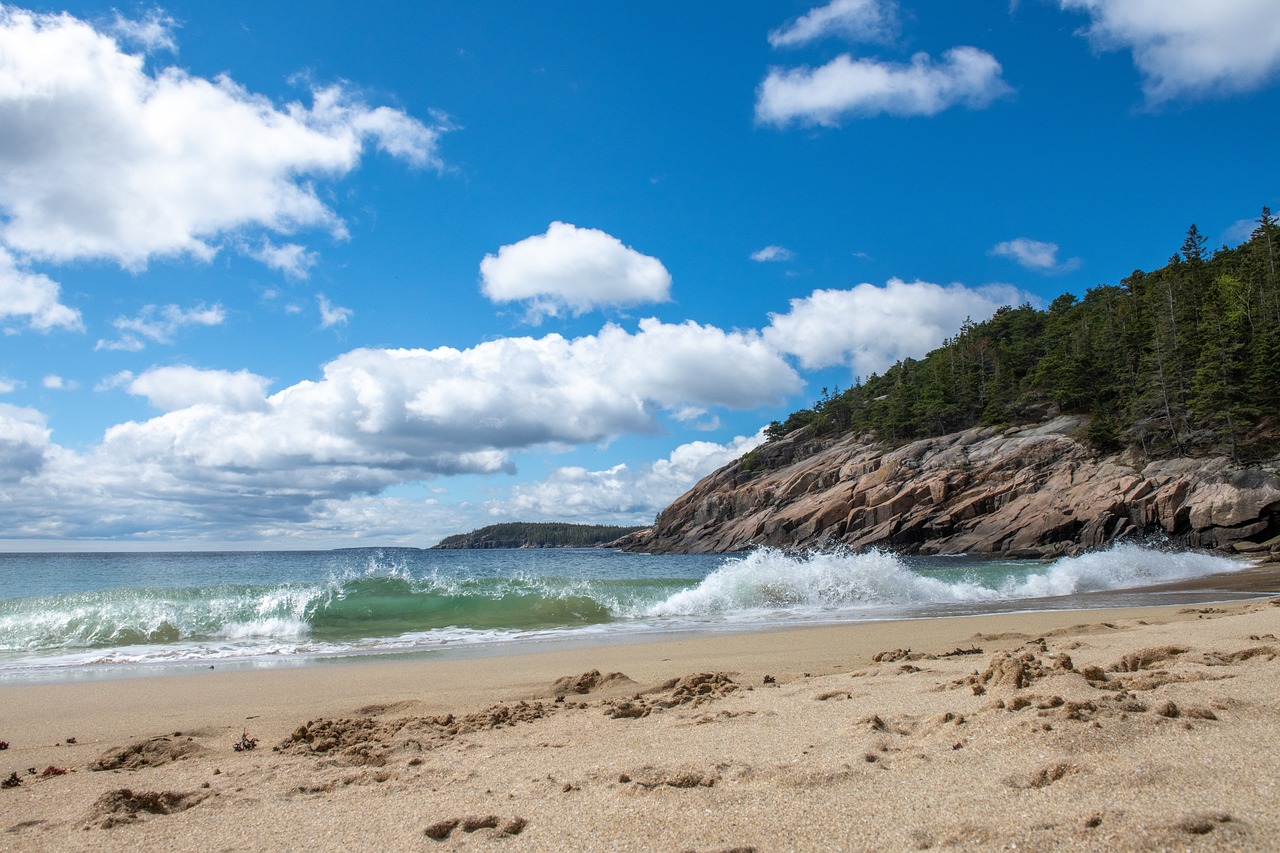Acadia National Park, situated on Maine’s picturesque coast, is a gem of natural beauty, offering a diverse range of experiences throughout the year. Whether you’re a hiker, wildlife enthusiast, or simply seeking serene landscapes, Acadia has something to offer. The best time to visit Acadia National Park depends on whether you prefer warmer temperatures, fall foliage, or a more relaxed atmosphere.
Let’s explore the weather, crowds and more to find the the best times for you to visit Acadia National Park. It is such a majestic region of the country, it is hard to go wrong with anytime you visit.
Best Time to Visit Acadia National Park Based on Weather
Acadia National Park is one of those destinations where you want to visit multiple times. The seasons bring such differences and the landscapes change dramatically with the various wildflowers in the spring or fall foliage in September and October. You cannot go wrong but here is a look at the weather and how it might influence your decision on when you want to visit.
Spring (April to June):
Spring in Acadia brings blooming wildflowers and reawakening wildlife. Average high temperatures range from 50°F to 63°F (10°C to 17°C), with lows around 34°F to 45°F (1°C to 7°C). Rainfall is moderate, so be prepared for occasional showers.
Summer (July to August):
Summer is the peak tourist season at Acadia, thanks to warm weather and long daylight hours. Highs average around 67°F to 75°F (19°C to 24°C), while lows stay mild at 51°F to 58°F (11°C to 14°C). Rainfall is relatively low during these months, but occasional showers can occur.
Fall (September to October):
Fall foliage at Acadia is a breathtaking spectacle. The park’s hardwood forests turn into a vibrant canvas of reds, oranges, and yellows. Temperatures are comfortable, with highs ranging from 58°F to 70°F (14°C to 21°C) and lows from 43°F to 54°F (6°C to 12°C). Rainfall remains moderate.
Winter (November to March):
Winter transforms Acadia into a quiet, snow-covered wonderland. While many park facilities close during this season, it’s perfect for cross-country skiing, snowshoeing, and experiencing the park’s serene beauty without the summer crowds. Highs average from 35°F to 41°F (2°C to 5°C), and lows drop to 17°F to 25°F (-8°C to -4°C). Snowfall is frequent, and rain is minimal during winter.
Best Time to Visit Acadia National Park: Crowds and Prices
Everyone prefers experiencing their vacation without battling crowds of people. The challenge is the vacation season and best weather often coincide together.
Avoiding Crowds: To escape the peak summer crowds, plan your visit during the shoulder seasons of spring and fall. These months offer pleasant weather and more tranquility. Weekdays are also generally less crowded than weekends. However, remember that the fall foliage of Maine and the northeast attract many visitors. You can still experience crowds in the fall for those that covet these magnificently colored landscapes.
Budget Considerations: Accommodation prices tend to be higher during the summer months. If you’re looking to save on lodging, consider visiting in the quieter months of spring or fall. Some accommodations may even offer winter discounts. The fall foliage season can keep some of the prices higher than traditional fall shoulder seasons in other places.
Best Attractions of Acadia and the Best Time to See Them
Cadillac Mountain: This iconic peak offers stunning sunrise views. Visit during the early morning hours to witness the first light in the United States from October to March when the road to the summit is open. This is where you can first see the sunrise from anywhere in the United States.
Jordan Pond: Known for its crystal-clear waters and scenic views, Jordan Pond is best explored on a sunny day. Summer and early fall are perfect for a leisurely walk around the pond.
Thunder Hole: This natural wonder is most impressive during high tide and when the seas are rough. The sound of the waves crashing into the crevice can be heard best in the fall and winter. High tides occur twice a day so check with the ranger station for tidal schedules during your visit.
Hiking Trails: Acadia boasts a network of hiking trails catering to various skill levels. Late spring and early fall are great for comfortable hiking conditions and fewer bugs. Cadillac North Ridge Trail and Jordan Pond Path are popular choices.
What Wildlife Can You See at Acadia National Park?
Birdwatching: Acadia’s diverse habitats make it a prime spot for birdwatching. Look out for peregrine falcons on the Precipice Trail and coastal birds like puffins and guillemots on boat tours during the summer.
Whale Watching: The waters off Acadia’s coast are teeming with marine life. Summer is the best time for whale watching tours, where you might spot humpback, finback, and minke whales.
Mammals: Acadia is home to a variety of mammals, including red foxes, white-tailed deer, and moose. Early mornings and evenings are your best bet for wildlife sightings.
Conclusion
Choosing the best time to visit Acadia National Park depends on your preferences and the experiences you seek. Whether you’re captivated by vibrant fall foliage, crave the tranquility of winter, or enjoy the bustling energy of summer, Acadia offers a unique adventure year-round. Be mindful of weather, crowds, and seasonal attractions to make the most of your visit to this remarkable natural wonder.
Photo Credits:
Image by Gregory Sabin from Pixabay

